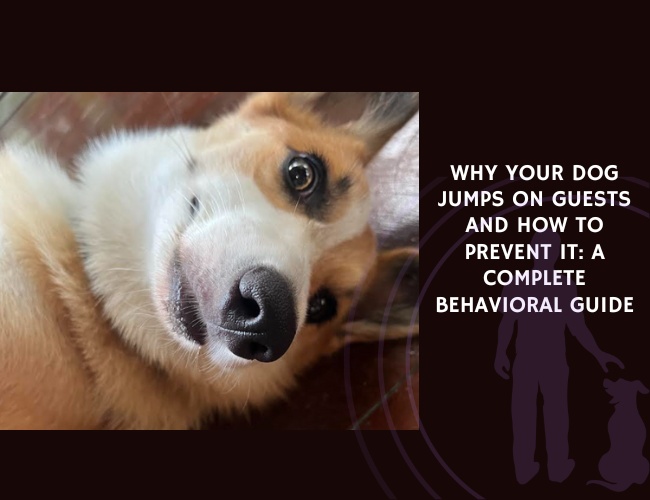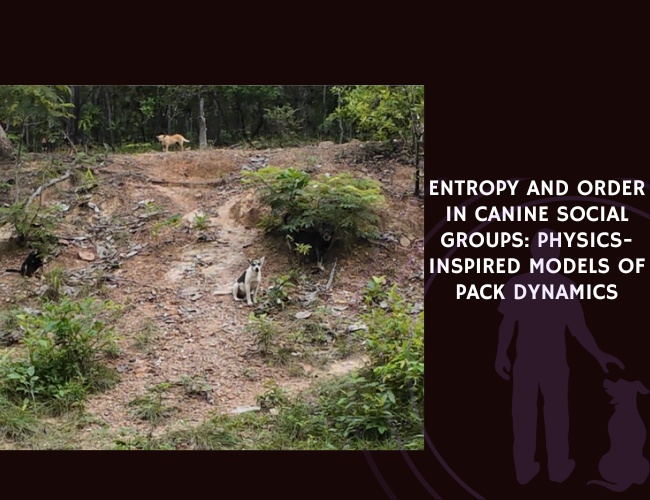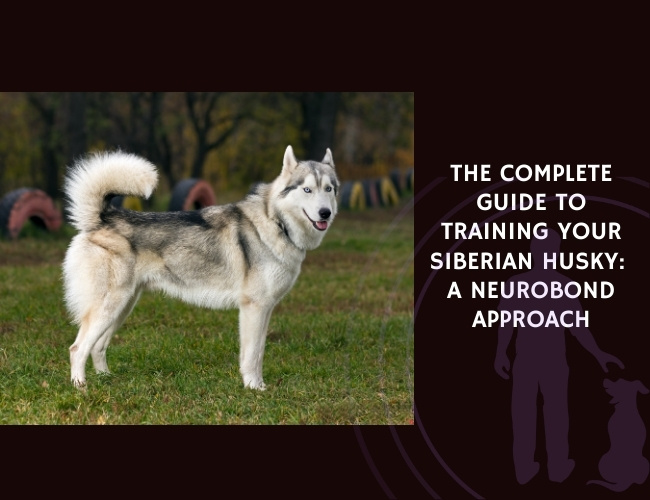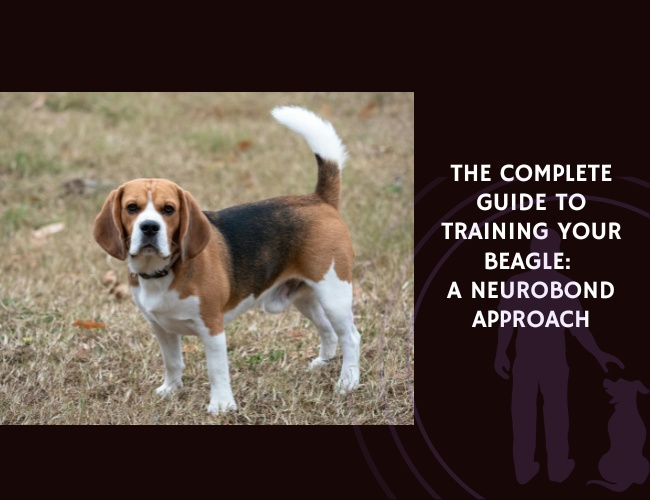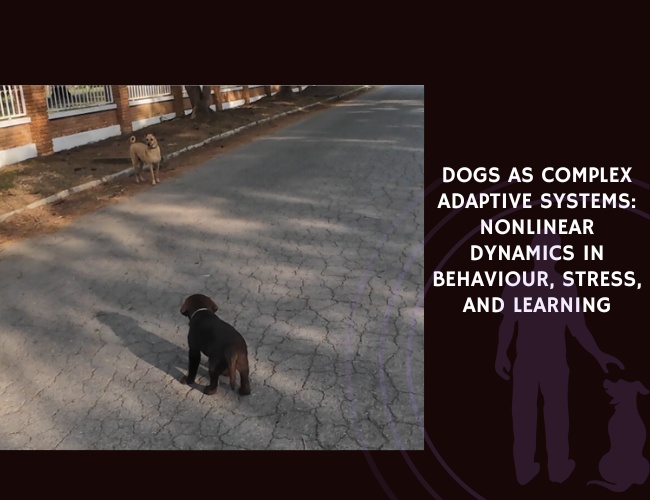Picture this: your doorbell rings, and within seconds, your otherwise well-behaved furry friend transforms into a bouncing bundle of enthusiasm, launching themselves at your arriving guests with the force of a small hurricane. If this scene feels all too familiar, you’re not alone in navigating this common yet challenging canine behavior. Let us guide you through understanding why your dog exhibits this behavior and, more importantly, how to transform those overenthusiastic greetings into polite, controlled welcomes that everyone can enjoy.
The truth is, jumping on guests represents one of the most misunderstood behaviors in our canine companions. While it might seem like simple bad manners, this behavior actually stems from a complex interplay of evolutionary instincts, learned patterns, and emotional responses that tell us so much about how our dogs experience the world. Understanding these underlying motivations isn’t just academically interesting—it’s the key to creating lasting behavioral change that strengthens the bond between you and your four-legged family member.
Understanding the Behavioral Motivations Behind Jumping
The Science of Attention-Seeking Behavior
When we examine why dogs jump on guests, we need to first understand that this behavior rarely exists in isolation. Your dog’s jumping represents a constellation of motivations, with attention-seeking sitting at the very heart of the matter. Dogs are remarkably attuned to human communicative gestures, having evolved alongside us for thousands of years to become experts at reading our body language, facial expressions, and vocal tones.
The neurological basis of attention-seeking reveals fascinating insights into your dog’s mind. When your furry friend jumps up to greet someone, their brain releases a cascade of neurotransmitters including dopamine and oxytocin—the same chemicals associated with pleasure and bonding in humans. This neurochemical reward system means that even a startled gasp or a gentle push away can reinforce the behavior, as your dog’s brain interprets any response as successful social engagement.
Human-directed behavior patterns in dogs have been shaped by millennia of domestication. Unlike their wolf ancestors who rarely seek prolonged eye contact or physical proximity with humans, our domestic dogs have developed an almost magnetic attraction to human interaction. This evolutionary adaptation means that your dog’s jumping isn’t defiance—it’s actually their attempt at species-appropriate communication, albeit expressed in a way that doesn’t quite fit our human social norms.
The Power of Reinforcement History
Every time your dog has jumped on someone—whether it was you coming home from work, a family member, or a guest—their brain has been carefully cataloging the outcomes. This is where the concept of reinforcement history becomes crucial to understanding and modifying the behavior.
Unintentional reinforcement happens more often than most pet parents realize. Consider these common scenarios that actually encourage jumping:
- Greeting your dog enthusiastically when they jump up after you’ve been away
- Guests who say “it’s okay, I love dogs!” while petting your jumping pup
- Children who giggle and engage playfully when your dog bounces up
- Even negative attention like saying “no” or “down” while making eye contact
The challenge with established jumping behavior is its resistance to extinction—a phenomenon well-documented in behavioral science. Once your dog has learned that jumping sometimes results in attention (even if it’s only successful 30% of the time), they’re likely to persist with the behavior far longer than if it had never been rewarded at all. This intermittent reinforcement schedule is actually the strongest type of behavioral conditioning, similar to what keeps people pulling slot machine levers in casinos.
Breaking the cycle requires understanding that every single interaction either reinforces or diminishes the jumping behavior. There’s no neutral ground here—which is why consistency across all family members and guests becomes absolutely essential for success.
Social Excitement and Arousal Regulation
Did you know that your dog’s ability to control their impulses varies significantly based on their arousal level? When guests arrive, your dog experiences a surge of excitement that can overwhelm their capacity for self-control, much like a child at a birthday party who simply cannot contain their enthusiasm.
The arousal curve in dogs follows a predictable pattern:
- Baseline calm: Your dog is relaxed and responsive to cues
- Alert interest: Doorbell rings, arousal begins to rise
- Excited anticipation: Footsteps approach, arousal peaks
- Overflow behavior: Jumping occurs as emotional regulation fails
- Gradual decline: Arousal slowly returns to baseline after greeting
Understanding this curve helps explain why your normally obedient dog seems to “forget” their training when visitors arrive. Their prefrontal cortex—the brain region responsible for impulse control and decision-making—literally goes offline when arousal reaches a certain threshold. This means that expecting your dog to make good choices in these high-excitement moments without proper preparation is like asking someone to solve math problems while riding a roller coaster.
Developmental Aspects: From Puppyhood to Senior Years
Early Life Experiences and Behavioral Formation
The foundation for jumping behavior often gets established during those crucial early weeks and months of a puppy’s life. Between 3 and 14 weeks of age, puppies go through what’s known as the critical socialization period, where their brains are particularly plastic and receptive to learning social norms.
Puppyhood behaviors that evolve into jumping typically begin innocently enough. That adorable little puppy pawing at your leg for attention seems harmless when they weigh 10 pounds, but fast-forward six months when they’ve grown to 60 pounds, and suddenly that same behavior isn’t quite so charming. The disconnect happens because we often inadvertently encourage behaviors in puppies that we later find problematic in adult dogs.
During the juvenile period (roughly 3-6 months), puppies naturally exhibit more frequent and intense greeting behaviors. In their interactions with littermates and adult dogs, jumping up to lick faces and solicit attention is completely normal canine etiquette. The challenge comes when we need to teach them that human social rules differ from dog social rules—a concept that isn’t immediately intuitive to our four-legged friends.
The persistence of early patterns means that behaviors reinforced during puppyhood tend to become deeply ingrained. Research in canine development shows that habits formed before sexual maturity are particularly resistant to change, which explains why adult dogs who jumped as puppies often require more intensive intervention than those who learn appropriate greetings from the start.
Age-Related Changes in Behavior and Motivation
As your dog matures, their motivations for jumping and their responsiveness to training interventions shift in predictable ways. Understanding these developmental changes helps you tailor your approach for maximum effectiveness.
Young adults (1-3 years) often show the most intense jumping behavior. They’ve reached physical maturity but may still lack emotional regulation skills. Their reward responsiveness tends to be high, meaning they’re eager to work for treats, praise, or play, but they’re also easily distracted and may struggle with impulse control. This age group benefits from high-energy training sessions that channel their enthusiasm into appropriate behaviors.
Mature adults (3-7 years) typically show more selective jumping, perhaps only with certain favored people or in specific contexts. Their learning ability remains strong, but they may have years of reinforcement history to overcome. The good news? Their improved impulse control and lower overall arousal levels make them excellent candidates for behavior modification programs.
Senior dogs (7+ years) might continue jumping out of habit rather than enthusiasm. Age-related changes in cognition, vision, or hearing can affect their response to training. However, senior dogs often respond beautifully to gentle, patient retraining that respects their physical limitations while engaging their still-eager minds. You might notice your senior dog’s jumping becomes less vigorous but more persistent—a sign that the emotional motivation remains even as physical capability decreases. 🧡
Neurobiological and Emotional Factors
The Brain Science Behind Impulse Control
Let’s dive deeper into what’s happening in your dog’s brain when they see a guest and feel that overwhelming urge to jump. The neurobiological systems involved are remarkably similar to those in humans, which helps us understand both the challenge and the solution.
Inhibitory control mechanisms in the canine brain primarily involve the prefrontal cortex working in concert with the basal ganglia. When your dog successfully resists the urge to jump, these brain regions are actively suppressing the motor commands that would normally result in jumping behavior. However, individual dogs vary significantly in their inhibitory control capacity, influenced by both genetics and experience.
Some fascinating research has identified specific neurotransmitter systems that affect impulse control:
- Serotonin: Lower levels correlate with increased impulsivity
- Dopamine: Affects reward-seeking and motivation
- GABA: The brain’s primary inhibitory neurotransmitter
- Norepinephrine: Influences arousal and attention
This neurochemical ballet means that factors affecting these systems—including diet, exercise, stress, and even time of day—can influence your dog’s ability to control their jumping impulses. For instance, a dog who hasn’t had adequate physical exercise may have excess energy that compromises their inhibitory control, while a dog experiencing chronic stress might have altered serotonin levels that make impulse control more challenging.
Emotional Regulation and Stress Responses
The emotional component of jumping behavior often gets overlooked, yet it’s crucial for developing effective interventions. When your dog jumps on guests, they’re not just seeking attention—they’re experiencing a complex emotional state that might include excitement, anxiety, uncertainty, or even fear.
Stress-related jumping manifests differently from excitement-based jumping. You might notice:
- More frantic, repetitive jumping patterns
- Accompanying stress signals like panting, whining, or trembling
- Difficulty settling even after initial greetings
- Increased intensity when guests are unfamiliar or numerous
The relationship between stress and jumping creates what behaviorists call a “feedback loop.” The dog feels anxious about the social situation, jumps to seek reassurance or control, receives mixed signals from humans (who might push them away or scold them), which increases anxiety, leading to more jumping. Breaking this cycle requires addressing both the behavior and the underlying emotional state.
Emotional contagion also plays a role—dogs are remarkably adept at picking up on human emotions. If you feel tense or embarrassed when guests arrive (perhaps because you’re anticipating your dog’s jumping), your dog senses this emotional shift and may become more aroused or anxious themselves, making jumping more likely.
Genetic Predispositions and Breed Influences
While all dogs can learn not to jump, some breeds face greater challenges due to their genetic heritage and selective breeding history. Understanding your dog’s breed-specific tendencies helps set realistic expectations and tailor training approaches.
High-energy working breeds like Border Collies, Australian Shepherds, and German Shepherds were selected for intense focus and enthusiasm in their work. This translates to greeting behaviors that can be particularly exuberant. Their high intelligence means they learn quickly, but their intense drive means they may need more outlets for their energy to achieve calm greetings.
Companion breeds such as Cavalier King Charles Spaniels, Havanese, and Pugs were specifically bred for close human companionship. Their genetic programming for human interaction can make jumping particularly reinforcing for them, as physical closeness to humans fulfills a deep-seated breed purpose.
Terrier breeds bring their characteristic tenacity to greeting behaviors. Once they’ve decided jumping is the way to greet, their determination can make behavior modification challenging but certainly not impossible. Their independent nature means they may need more convincing that alternative behaviors are worthwhile.
Giant breeds present unique challenges—while a jumping Chihuahua might be manageable, a jumping Great Dane or Saint Bernard poses genuine safety concerns. Interestingly, many giant breeds are naturally more deliberate in their movements, which can be an advantage in training calm greetings once they understand what’s expected.

Environmental and Contextual Triggers
Reading the Room: Environmental Cues That Trigger Jumping
Your dog’s decision to jump doesn’t happen in a vacuum—it’s influenced by a complex array of environmental signals that we might not even consciously notice. Understanding these triggers empowers you to predict and prevent jumping before it occurs.
Auditory triggers often initiate the jumping sequence long before guests actually appear:
- Doorbell or door knock (classical conditioning at work)
- Car doors closing outside
- Familiar voices approaching
- Keys jingling at the door
- Even specific ringtones associated with frequent visitors
Each of these sounds triggers a cascade of anticipatory behaviors, with arousal building incrementally. By the time the door opens, your dog may already be at peak excitement, making impulse control nearly impossible.
Visual cues that promote jumping include:
- Direct eye contact from guests (interpreted as invitation to interact)
- Open body posture and smiling faces
- Hands held at dog height
- Rapid movements or animated gestures
- Bending over or crouching (often misinterpreted as play invitation)
Olfactory information plays a larger role than most people realize. Your dog can detect stress pheromones, perfumes, and even the scent of other animals on your guests’ clothing. Novel scents increase arousal and investigatory behavior, which often manifests as jumping to get closer to the source of interesting smells.
Human Reactions: The Unintentional Training We Provide
Here’s a truth that might be hard to hear: every person who has ever interacted with your jumping dog has been a dog trainer, whether they knew it or not. The cumulative effect of these interactions shapes your dog’s greeting behavior in powerful ways.
Common human responses that reinforce jumping:
The “Dog Lover’s Dilemma”: Well-meaning guests who insist “Oh, I don’t mind!” while your dog jumps all over them are actually your biggest training challenge. From your dog’s perspective, they’ve just learned that jumping works perfectly with some people, creating an intermittent reinforcement schedule that’s incredibly difficult to overcome.
The “Negative Attention Trap”: Saying “no,” “off,” or “down” while making eye contact and gesturing actually provides attention—exactly what your dog was seeking. Even stern voices and angry faces are preferable to being ignored from a dog’s perspective.
The “Physical Response Paradox”: Pushing your dog away might seem like a clear “no,” but many dogs interpret this as interactive play. You push, they bounce back—it becomes a fun game that actually increases jumping behavior over time.
The inconsistency challenge becomes particularly problematic in multi-person households. If one family member allows jumping while another discourages it, your dog learns to discriminate between people rather than learning a universal greeting rule. This person-specific learning demonstrates your dog’s intelligence but complicates training efforts.
Prevention and Intervention Strategies
Foundation Training: Building Blocks for Success
Before we can effectively address jumping, we need to establish a strong foundation of basic skills that give your dog alternative ways to seek attention and express excitement. Think of this as teaching your dog a new language for greeting—one that both species can appreciate.
The “Sit to Greet” Protocol represents the gold standard for polite greetings. Here’s how to build this behavior systematically:
Start in low-distraction environments, far from the exciting context of actual visitors. Practice having your dog sit for everything they want—meals, walks, play sessions, petting. This creates a default behavior where sitting becomes your dog’s go-to strategy for getting good things in life.
Next, practice with familiar people in controlled settings. Have family members approach slowly while your dog maintains a sit. If your dog breaks position, the person immediately turns away and walks back to their starting point. This teaches your dog that sitting keeps people coming closer, while jumping makes them leave—a powerful reversal of their previous learning.
The “Four on the Floor” Alternative works well for dogs who struggle with maintaining a sit when excited. Instead of requiring a specific position, you’re simply rewarding any moment when all four paws are on the ground. This might include standing calmly, lying down, or even walking politely beside a guest—anything except jumping.
The “Go to Place” Strategy gives your dog a specific job when guests arrive. Whether it’s a mat near the door, a bed in the living room, or a crate with the door open, having a designated spot provides clear structure during chaotic greeting moments. This strategy works particularly well for dogs who feel overwhelmed by arrival commotion.
Advanced Techniques: Fine-Tuning Greeting Behavior
Once your foundation is solid, you can implement more sophisticated strategies that address the nuanced challenges of real-world greetings.
Differential Reinforcement of Incompatible Behavior (DRI) involves rewarding a behavior that physically prevents jumping. A dog holding a toy in their mouth, for instance, is less likely to jump. Some dogs naturally grab toys when excited, and you can shape this into a greeting ritual. Imagine your guests’ delight when your dog greets them by proudly presenting a favorite toy rather than launching at them!
The “Look at That” Protocol borrowed from reactive dog training, teaches your dog to notice guests without immediately engaging. You reward your dog for looking at the guest, then looking back at you. This creates a moment of choice and thought between stimulus (guest) and response (jumping), allowing your dog’s thinking brain to stay online even in exciting moments.
Graduated Exposure Training systematically increases the difficulty of greeting scenarios:
- Start with the least exciting person (perhaps someone your dog sees daily)
- Progress to moderately exciting people (extended family, friends)
- Work up to highly exciting people (children, delivery persons, strangers)
- Add challenging contexts (multiple guests, parties, doorway greetings)
Each level should be mastered before moving to the next, ensuring your dog builds confidence and success gradually.
Environmental Management: Setting the Stage for Success
Sometimes the smartest training strategy is to prevent the problem behavior from occurring in the first place. Environmental management isn’t giving up—it’s strategic planning that protects your training progress while real life continues.
The Power of Baby Gates and Barriers: Installing a baby gate near your entrance creates a buffer zone where initial excitement can dissipate before direct guest interaction. Your dog can see and smell visitors but can’t physically jump on them, allowing arousal levels to decrease naturally before greetings occur.
Leash Management Techniques provide immediate control without relying solely on your dog’s impulse control:
- Keep a leash by the door for quick application before guests enter
- Use the leash to guide your dog to their greeting position
- Gradually phase out leash dependence as behavior improves
- Consider a lightweight “house line” for subtle management during training phases
Strategic Use of Treats and Toys: Scatter feeding can transform arrival chaos into a calm foraging opportunity. When the doorbell rings, scatter a handful of treats on the floor away from the door. Your dog learns that doorbells predict food-finding games rather than jumping opportunities. This classical conditioning approach changes the emotional response to guests arriving.
Breed-Specific Considerations and Individual Differences
Tailoring Your Approach to Your Dog’s Heritage
Understanding your dog’s breed background provides valuable insights into both the challenges you might face and the motivational strategies most likely to succeed. Let’s explore how to customize your anti-jumping protocol based on breed tendencies.
Herding Breeds (Australian Shepherds, Corgis, Collies): These dogs were bred to control movement, and jumping often represents their attempt to manage the “flock” of arriving humans. Channel this instinct by teaching them to “gather” guests to a specific location rather than jumping. Use their incredible focus and training enthusiasm to your advantage—these dogs often excel at complex greeting protocols once they understand the rules.
These breeds typically respond best to:
- Clear, consistent patterns and routines
- Jobs that give them a sense of purpose during greetings
- Mental challenges that engage their problem-solving abilities
- Movement-based rewards after successful calm greetings
Sporting Breeds (Labradors, Golden Retrievers, Spaniels): Bred for enthusiastic partnership with humans, these dogs often view jumping as a natural expression of their collaborative spirit. Their soft mouths make them excellent candidates for toy-carrying greeting protocols. Their desire to please means they’re often devastated by harsh corrections but thrive with positive reinforcement.
Training adjustments for sporting breeds:
- Incorporate retrieve games as rewards for calm greetings
- Use their natural “soft mouth” for carrying welcome toys
- Provide plenty of exercise before anticipated guest arrivals
- Leverage their cooperative nature with team-based training approaches
Toy Breeds (Yorkies, Maltese, Chihuahuas): While their jumping might seem less problematic due to size, these little dogs often jump persistently because it’s been inadvertently encouraged. Being picked up when jumping reinforces the behavior powerfully. These dogs need the same consistent training as larger breeds, with special attention to ensuring all family members resist the urge to scoop them up mid-jump.
Special considerations for small dogs:
- Train alternative “ask to be picked up” signals
- Ensure guests understand not to reinforce jumping by picking them up
- Use platform training to bring them closer to human level appropriately
- Be mindful that their small size doesn’t excuse poor manners
Individual Personality Factors
Beyond breed, each dog brings their own unique personality to the greeting scenario. Recognizing your individual dog’s traits helps fine-tune your approach for maximum effectiveness.
The Anxious Greeter jumps from a place of uncertainty rather than pure excitement. These dogs need:
- Predictable greeting routines that reduce uncertainty
- Calming supplements or pheromone support during training
- Gradual desensitization to doorbell and arrival sounds
- Safe spaces to retreat if overwhelmed
The Social Butterfly genuinely loves everyone and jumps from pure joi de vivre. These dogs benefit from:
- Extra-high-value rewards that compete with guest attention
- Structured greeting protocols that channel their enthusiasm
- Regular socialization opportunities to reduce novelty excitement
- Energy outlets before anticipated guest arrivals
The Selective Jumper only jumps on certain people or in specific contexts. This discriminating behavior actually demonstrates high intelligence and requires:
- Careful analysis of triggering factors
- Consistent rules across all people and situations
- Special attention to generalizing training to various contexts
- Recognition that this dog is capable of nuanced behavior choices
Excited. Reinforced. Preventable.
Jumping seeks connection. Dogs leap to access human faces and attention, fueled by neurochemical rewards that make even negative reactions feel like success. What we label “bad manners” is often just misplaced communication.
History cements habits. Each laugh, pet, or scolding after a jump strengthens the behavior through intermittent reinforcement. Inconsistent responses create the very persistence that makes breaking the cycle so difficult.
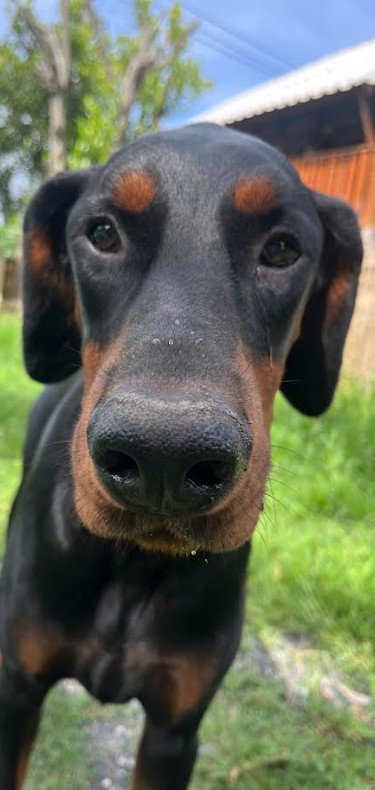
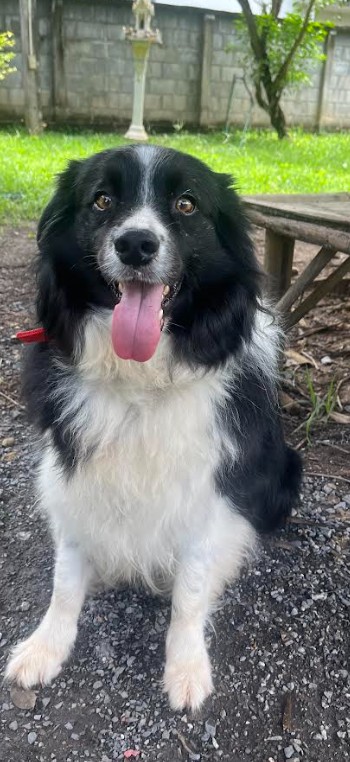
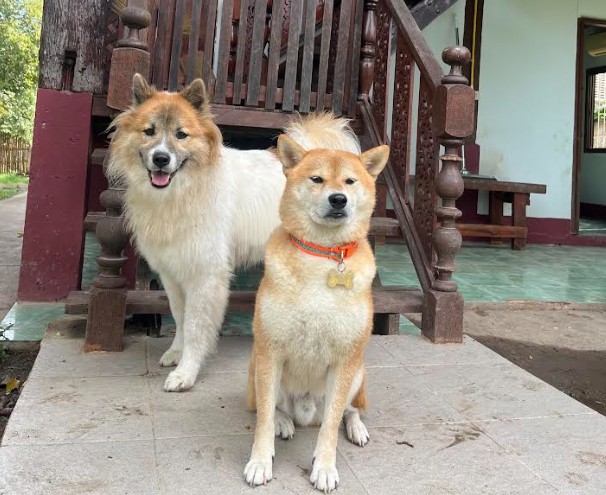
Arousal drives action. Guest arrivals trigger emotional surges that overwhelm impulse control. Training succeeds by lowering excitement, rewarding calm alternatives, and guiding your dog into balanced, polite greetings.
Troubleshooting Guide: When Jumping is Selective
The “If This, Then That” Decision Tree
One of the most perplexing challenges dog parents face is selective jumping—when your dog seems to discriminate between people, choosing specific individuals or types of people to jump on while remaining calm with others. This selective behavior actually demonstrates your dog’s sophisticated ability to categorize and remember different types of social interactions. Let’s decode these patterns and develop targeted solutions for each scenario.
“My Dog Only Jumps on Children”
Children trigger jumping for unique reasons that require specialized intervention strategies. Their high-pitched voices, rapid movements, and eye-level height make them irresistible targets for enthusiastic dogs. Additionally, children often inadvertently reinforce jumping through squealing, running, or flailing arm movements that dogs interpret as play invitations.
The “Boring Kid” Protocol transforms children from exciting playmates into calm, predictable presences:
First, educate children before they interact with your dog. Teach them to become “tree kids”—when the dog approaches, they stand still with arms crossed (“branches”) and look up at the sky (avoiding eye contact). This removes all the stimulation that triggers jumping. Practice this with cooperative neighborhood children or family members, rewarding both kids and dogs for successful calm interactions.
The graduated child exposure plan works like this:
- Start with calm, dog-savvy children who can follow instructions perfectly
- Practice with children sitting still before standing interactions
- Introduce slightly more animated children as your dog succeeds
- Work up to typical kid energy levels over several weeks
- Always supervise and intervene before jumping occurs
Creating child-specific calm cues: Teach your dog that children predict special calm-only games. When kids arrive, immediately engage your dog in stationary activities like “find it” games with treats scattered on the ground, keeping your dog’s focus downward rather than up at jumping height. Children can participate by dropping treats from standing height, teaching your dog that good things come from children when all four paws stay planted.
Remember that protecting children from jumping isn’t just about training—it’s about safety. A jumping dog can easily knock over a small child, causing injury and creating lasting fear of dogs. Make this your highest priority training scenario if children are regular visitors to your home.
“My Dog Only Jumps on Men (But Not Women)”
Gender-specific jumping often puzzles owners, but it usually stems from identifiable triggers. Men typically have deeper voices, larger physical presence, and different movement patterns than women. Some dogs find these characteristics either more exciting or more intimidating, with jumping serving different emotional functions in each case.
Identifying the trigger factors:
- Voice depth and volume (men often speak louder to dogs)
- Physical size and stance (broader shoulders, different posture)
- Scent differences (cologne, testosterone-influenced scent)
- Interaction style (men might roughhouse more with dogs)
- Previous reinforcement (men might have encouraged jumping as “manly” play)
The systematic desensitization approach for male-specific jumping:
Start with the least triggering male presence—perhaps a calm, soft-spoken man sitting quietly. Reward your dog for calm behavior at increasing proximity. Gradually add typical male characteristics: standing posture, deeper voice, movement. If your dog has a positive relationship with one calm man, use him as your “starter male” for training, then generalize to others.
Addressing fear-based jumping on men: Some dogs jump on men from anxiety rather than excitement. Watch for stress signals like pinned ears, trembling, or immediate retreat after jumping. These dogs need confidence-building rather than impulse control:
- Pair men’s presence with extremely high-value rewards
- Have men ignore the dog initially, allowing approach on dog’s terms
- Use calming protocols like sniff walks with male handlers
- Never force interactions; let your dog set the pace
“My Dog Only Jumps on People Wearing Hats, Uniforms, or Unusual Clothing”
Dogs perceive people wearing hats, sunglasses, uniforms, or bulky clothing as fundamentally different from “regular” humans. This isn’t silliness—it’s evolutionary caution about altered silhouettes and obscured facial features. Your dog might not even recognize familiar people when they’re wearing unusual accessories.
The costume desensitization protocol:
Begin with family members your dog knows well. Have them put on various accessories while your dog watches:
- Start with the item visible but not worn (hat on table)
- Person holds item while interacting normally
- Person puts on item briefly, then removes it
- Gradually increase wearing duration
- Practice greetings while wearing items
The “uniform means calm” training:
For delivery persons and service workers, create specific protocols:
- Set up practice sessions with friends dressed as delivery people
- Teach your dog that uniforms predict treat scatters on the ground
- Practice behind a barrier initially (glass door, baby gate)
- Use recordings of delivery truck sounds paired with rewards
- Install a delivery box away from your door to reduce direct interactions
Managing the “winter coat phenomenon”: Many dogs show increased jumping when people wear bulky winter clothing. The changed silhouette and muffled scent can trigger investigatory jumping. Practice seasonal transitions by having family members wear coats during indoor training sessions in fall, before winter arrivals make every guest a trigger.
“My Dog Only Jumps on Family Members (But Not Strangers)”
This paradoxical pattern—where your dog shows better manners with strangers than family—actually indicates successful partial training. Your dog has learned that jumping doesn’t work with unfamiliar people but maintains the behavior with family members who have a reinforcement history.
Breaking family patterns requires family commitment:
Hold a household meeting where everyone agrees to new greeting rules. The challenge? Family members often enjoy enthusiastic greetings and unconsciously sabotage training. Address this by:
- Creating alternative greeting rituals that satisfy both dog and human
- Establishing “calm zones” where jumping is never allowed
- Designing “party zones” where exuberant play is appropriate (backyard only)
- Using video to show family members how they’re reinforcing jumping
The “stranger first” protocol:
Since your dog already greets strangers calmly, use this to your advantage:
- Have a stranger greet your dog (calm behavior occurs)
- Family member approaches immediately after, mimicking stranger’s demeanor
- Reward the continued calm behavior
- Gradually fade the stranger prompt
- Family members adopt “stranger energy” during all greetings
Resetting ingrained family dynamics:
Sometimes you need a complete behavioral reset with family members:
- Have family members leave and return as if they’re guests
- Use different entrance doors to break patterns
- Change your greeting location entirely
- Implement a two-week “no touch, no talk, no eye contact” reset where family members completely ignore the dog during arrivals until calm behavior is offered

The Emergency Guest Protocol: When the Doorbell Rings Unexpectedly
Your 30-Second Action Plan
Picture this: You’re midway through training, your dog is making progress but isn’t reliable yet, and suddenly—ding dong! An unexpected visitor arrives. Your heart races as you realize you have mere seconds before potential chaos erupts. This is exactly when you need an emergency protocol that works with reality, not against it.
The RAPID Response System (Redirect, Arrange, Prevent, Intervene, Debrief):
R – Redirect Immediately (0-5 seconds): The instant you hear the doorbell, don’t hesitate—act! Toss a handful of treats away from the door, use your emergency recall word, or grab that squeaky toy. Your goal isn’t perfect behavior; it’s buying time. Even if your dog ignores the redirect initially, you’ve planted a distraction seed that might help in a moment.
A – Arrange Barriers (5-10 seconds): Grab the nearest management tool. This might be:
- Closing an interior door between dog and entrance
- Stepping into a bathroom with your dog momentarily
- Using your body to block access to the front door
- Grabbing the dragline leash you keep by the door
- Activating a baby gate if installed
P – Prevent Rehearsal (10-20 seconds): This is critical—every time your dog successfully jumps, the behavior strengthens. Prevention options in order of effectiveness:
- Secure dog in another room (if possible)
- Leash and hold at distance from door
- Body block between dog and guest
- Continuous treat stream at your side
- If all else fails, warn guest through door to wait
I – Intervene Strategically (20-30 seconds): Now you’re at the door with some level of control. Your intervention depends on your visitor:
- Delivery person: Keep door barely cracked, body blocking
- Friend: Quickly explain you’re training, ask for cooperation
- Stranger: Professional greeting while managing dog with feet/legs
- Emergency services: Secure dog first, then attend to emergency
D – Debrief and Learn (After guest leaves): Every emergency is a learning opportunity. Ask yourself:
- What worked in those 30 seconds?
- What tools would have helped if positioned differently?
- Can I practice this scenario when prepared?
- Should I adjust my management setup?
Quick Management Tools: Your Emergency Arsenal
Having the right tools strategically placed transforms panic into manageable moments. Here’s your emergency preparedness kit and where to position each item:
By the front door:
- Treat jar with lid: High-value, smelly treats that work instantly
- Slip leash on hook: Faster than clips and collars in emergencies
- Baby gate (pressure-mounted): Can create instant barrier
- “Please Wait” sign: Buys you precious seconds with guests
- Toy basket: Novel toys for emergency distraction
Strategic placement throughout home:
- Treat stations: Small containers in every room for quick access
- Draglines: Lightweight leashes left on during training phases
- Visual barriers: Curtains or blinds to block door view
- Sound machine: Near door to muffle approach sounds
- Exercise pen sections: Portable barriers for instant space management
The “Emergency Kit Upgrade” for serious situations:
- Citronella spray deterrent: For safety with aggressive jumpers
- Air horn: Interrupts intense arousal (use sparingly)
- Calming pheromone spray: For anxiety-driven jumpers
- Non-slip rug: Prevents sliding/launching at door
- Hands-free treat pouch: Always accessible rewards
Damage Control Techniques: When Prevention Fails
Despite best efforts, sometimes jumping happens. How you handle these moments determines whether they become setbacks or learning experiences.
If jumping occurs, immediate response:
- No emotion: Blank face, monotone voice if speaking
- Minimal physical contact: Don’t push; turn body away
- Guest education: Quickly instruct “please turn around”
- Remove dog neutrally: Guide away without scolding
- Reset calmly: Take dog to quiet space, wait for calm
The “Oops Recovery” protocol: When your dog jumps despite your efforts, resist the urge to apologize profusely or make it a big deal. Instead:
- Calmly say “Oops, training moment”
- Guide dog away matter-of-factly
- Return to guest without dog initially
- Brief explanation: “We’re working on greetings”
- If appropriate, attempt controlled re-greeting
Managing guest reactions:
- For fearful guests: Immediately secure dog, prioritize guest comfort
- For “helpful” guests who say “It’s fine!”: Politely insist on your rules
- For angry guests: Apologize once, secure dog, don’t over-explain
- For dog-loving enablers: Have treats ready for them to use properly
Turning Unexpected Visits into Training Opportunities
Here’s the silver lining: unexpected visitors provide the most realistic training scenarios. With the right mindset, these surprises become valuable teaching moments.
The “Surprise into Success” method:
Once you’ve managed the immediate situation, if your guest is willing, transform this into a training session:
- Ask guest for 2-3 minutes of help
- Have them step outside and re-approach
- Practice your trained greeting protocol
- Reward success enthusiastically
- End on a positive note before guest patience wanes
Creating “controlled surprises”:
- Ask friends to occasionally show up unannounced (with your prior general consent)
- Use delivery windows as practice opportunities
- Set up “fake” doorbell rings during training
- Practice with family members arriving home at varied times
The learning log approach: Keep a notebook by your door to quickly jot down:
- Time and type of visitor
- Your dog’s arousal level (1-10)
- What management worked/failed
- Guest cooperation level
- Ideas for next time
This data reveals patterns you might miss in the moment, like higher jumping rates in evening hours or with particular types of visitors.
Recovery Protocols: Bouncing Back from Failed Greetings
A failed greeting—where your dog jumps enthusiastically despite all efforts—can feel devastating when you’ve been working so hard. But these moments don’t erase progress; they’re simply data points in the learning process.
The 24-Hour Reset Protocol:
After a particularly chaotic greeting failure:
- First hour: No training, just calm coexistence
- Hours 2-6: Basic obedience refreshers (sit, stay, down)
- Hours 6-12: Successful setups with family only
- Hours 12-24: One controlled easy greeting
- Day 2: Return to regular training plan
Emotional recovery for you (yes, this matters!):
Training setbacks can trigger frustration, embarrassment, or defeat. Your emotional state affects your dog’s behavior, so your recovery matters:
- Acknowledge that regression is normal, not failure
- Remember your dog’s successes, not just this moment
- Take a break if you’re feeling overwhelmed
- Connect with supportive training communities
- Celebrate the next small success extra enthusiastically
Preventing “one bad visit” from becoming a pattern:
After a failed greeting, your dog might be primed for more excited behavior. Prevent escalation by:
- Increasing management for next 3-5 visits
- Lowering criteria temporarily (reward smaller successes)
- Avoiding challenging visitors for a few days
- Doubling down on calm exercises between greetings
- Using higher value rewards temporarily
Remember: Every professional dog trainer has stories of their own dogs jumping on someone important at the worst possible moment. Perfection isn’t the goal—progress is. Your commitment to working through these challenges, rather than giving up, is what will ultimately create the calm, polite greeter you envision. 🐾
Creating Your Comprehensive Training Plan
Week-by-Week Training Schedule
Let’s translate all this knowledge into a practical, actionable training plan you can implement starting today. This 8-week protocol progressively builds skills while maintaining real-world functionality.
Weeks 1-2: Foundation Building
- Practice basic sit and stay commands in calm environments (10 minutes, 3x daily)
- Introduce mat training or “place” command
- Begin doorbell desensitization using recordings at low volume
- Implement management strategies (gates, leashes) for all real guest arrivals
- Document baseline jumping frequency for progress tracking
Weeks 3-4: Controlled Greetings
- Practice greetings with familiar family members
- Introduce the “sit to greet” protocol with household members
- Gradually increase doorbell volume during training sessions
- Begin rewarding four-on-the-floor behavior throughout the day
- Start scatter-feeding protocol when doorbell rings
Weeks 5-6: Increasing Difficulty
- Arrange controlled greetings with friends willing to follow training protocols
- Practice with guests remaining still until dog settles
- Introduce movement and talking after initial calm greeting
- Work on duration—maintaining calm for extended greetings
- Add distraction training with toys and treats present
Weeks 7-8: Real-World Application
- Practice with delivery persons and unexpected visitors
- Reduce treat frequency, moving to intermittent reinforcement
- Introduce greeting guests at locations outside the home
- Troubleshoot remaining challenges
- Develop long-term maintenance plan
Troubleshooting Common Setbacks
Even with the best training plan, you’ll likely encounter challenges. Here’s how to navigate the most common stumbling blocks:
“My dog only jumps on certain people”: This selective behavior often involves either extra-exciting individuals (children, energetic friends) or people who inadvertently encourage jumping. Solution: These specific people need extra training too! Provide them with clear instructions and treats to reward appropriate behavior. Consider having special “training visits” with problematic greeters.
“The training works until the doorbell rings”: This indicates that doorbell arousal overwhelms trained behaviors. Solution: Intensify doorbell desensitization work. Play doorbell sounds during calm activities like feeding or gentle petting. Change your own emotional response to the doorbell—if you tense up, your dog notices.
“My dog regresses when we have parties”: Multiple guests create exponentially more excitement than single visitors. Solution: Build up gradually from one guest to many. Host “practice parties” with understanding friends. Consider management strategies like keeping your dog behind a gate during initial party arrivals, then allowing controlled greetings once energy settles.
“Family members won’t follow the training protocol”: Inconsistency undermines all your hard work. Solution: Hold a family meeting to explain how inconsistency actually creates more stress for your dog. Assign specific roles—perhaps one person handles all greetings while others support from a distance. Make it easier for family members to comply by keeping treats and leashes readily accessible.
The Long-Term Perspective: Maintaining Success
Creating Sustainable Greeting Habits
Success isn’t just about stopping jumping—it’s about creating greeting rituals that satisfy both human and canine social needs while being sustainable for years to come. Your dog needs to feel acknowledged and connected during greetings, just in a more appropriate way.
Building greeting ceremonies that work for your lifestyle might include:
- A specific toy your dog brings to guests (the “welcome toy”)
- A greeting dance or spin that channels excitement vertically
- A trained “show off” behavior like a bow or wave
- A calm sniff-and-circle investigation pattern
These alternatives provide the social interaction your dog craves while keeping everyone safe and comfortable. The key is choosing something that feels natural for your specific dog and doesn’t require constant human management once established.
Maintenance training shouldn’t feel like a burden. Instead, integrate brief practice sessions into daily life:
- Every meal becomes a sit-to-eat opportunity
- Each walk starts with a polite door exit
- Coming inside requires a calm entrance
- Petting happens only with four feet on floor
This approach means you’re not adding training time to your day—you’re simply being mindful about interactions you’re already having.
Adjusting Expectations Through Life Stages
As your dog ages, their greeting behavior will naturally evolve. Being prepared for these changes helps you adapt your approach proactively rather than reactively.
The adolescent regression (typically 6-18 months) often brings a temporary return of jumping behavior. This isn’t failure—it’s normal developmental testing of boundaries. Stay consistent with your training protocols, understanding that this phase will pass with patient persistence.
Middle-age mellowing (3-7 years) often brings naturally calmer greetings. This is your opportunity to solidify good habits that will carry into senior years. Don’t abandon training just because behavior improves—consistent reinforcement prevents future regression.
Senior adjustments (7+ years) might require modifying expectations. An arthritic dog might not be able to hold a sit but can still greet politely while standing. Cognitive changes might mean more frequent reminders about greeting rules. Adjust your protocols to respect physical limitations while maintaining behavioral standards.
Welfare Considerations: The Emotional Side of Training
Balancing Training Goals with Emotional Needs
While eliminating jumping is important for safety and social harmony, we must ensure our training methods don’t compromise our dogs’ emotional wellbeing. Your dog’s need for social connection is legitimate and shouldn’t be punished—only redirected into more appropriate expressions.
Signs your approach needs adjustment:
- Your dog becomes reluctant to greet people at all
- Increased anxiety or stress signals during greetings
- Loss of enthusiasm for visitors
- Development of alternative unwanted behaviors (barking, hiding)
- Decreased overall confidence in social situations
If you notice any of these signs, it’s time to reassess your training approach. Perhaps you’re moving too quickly, using inadequate rewards, or inadvertently creating negative associations with greetings. Remember, the goal is a happy, confident dog who greets appropriately—not a shut-down dog who avoids social interaction.
Positive welfare indicators that suggest your training is on track:
- Your dog shows happy anticipation when guests arrive
- Calm body language during greetings (soft eyes, relaxed tail)
- Quick recovery to baseline after initial excitement
- Voluntary offers of trained greeting behaviors
- Maintained friendliness toward strangers
The Human-Animal Bond Through Better Greetings
Here’s something beautiful that happens when you successfully teach your dog appropriate greetings: your relationship deepens. Rather than feeling embarrassed or frustrated when guests arrive, you feel proud of your dog’s behavior. This emotional shift creates a positive feedback loop where you’re more likely to include your dog in social situations, providing them with enriching experiences that further strengthen their social skills.
Your guests’ relationships with your dog improve too. When people aren’t being jumped on, they’re more likely to interact positively with your dog, providing the attention and affection your furry friend craves. Children become less fearful, elderly relatives feel safer, and friends look forward to visiting. Your dog becomes a welcomed part of social gatherings rather than a management challenge.
The trust you build through consistent, positive training extends far beyond greeting behavior. Your dog learns that you provide clear guidance in confusing situations, that following your cues leads to good outcomes, and that you’ll advocate for their needs while maintaining appropriate boundaries. This trust becomes the foundation for navigating other challenging behaviors and situations throughout your shared life. 🐾
Conclusion: Your Journey to Peaceful Greetings
As we reach the end of our comprehensive exploration of jumping behavior, let’s take a moment to acknowledge the journey ahead. Transforming your dog’s greeting behavior isn’t just about implementing techniques—it’s about understanding your individual dog’s motivations, respecting their emotional needs, and creating sustainable patterns that enhance everyone’s quality of life.
Remember that every dog is capable of learning appropriate greetings, regardless of age, breed, or history. Some will master the skills in weeks, others may take months, but progress is always possible with patience, consistency, and the right approach. Your dog isn’t jumping to frustrate you—they’re expressing natural canine enthusiasm in the only way they know how. By teaching them a better way, you’re not suppressing their personality but rather helping them navigate human society more successfully.
The strategies we’ve explored—from understanding neurobiological factors to implementing practical training protocols—provide you with a complete toolkit for addressing jumping behavior. But tools alone don’t create change. Your commitment to consistent implementation, your patience during setbacks, and your celebration of small victories will determine your ultimate success.
As you embark on this training journey, be kind to yourself and your dog. There will be days when your dog regresses, when guests don’t follow protocols, when you feel like giving up. These moments are part of the process, not signs of failure. Each interaction is a learning opportunity, each greeting a chance to practice and improve.
The investment you make in teaching appropriate greetings pays dividends for years to come. Imagine a future where doorbell rings bring anticipation rather than dread, where you confidently welcome guests knowing your dog will charm rather than challenge them, where your furry friend’s enthusiasm is expressed in ways that bring joy rather than chaos. This future is entirely achievable with the knowledge you now possess and the commitment to see it through.
Is this training journey right for you and your dog? If you’re ready to transform chaos into calm, to build deeper trust with your four-legged companion, and to create a more harmonious household for everyone involved, then yes—this journey is not just right but essential. Your dog is counting on you to guide them toward better greeting behaviors, and with the comprehensive understanding you’ve gained, you’re perfectly equipped to provide that guidance.
Take that first step today. Whether it’s installing a baby gate, practicing a simple sit command, or having a family meeting about consistency, every action moves you closer to your goal. Your future self—and your future guests—will thank you for the effort you invest now. Most importantly, your dog will thank you for providing the clear, kind guidance that helps them succeed in our human world while still being their wonderful, enthusiastic, loving self. 🧡

